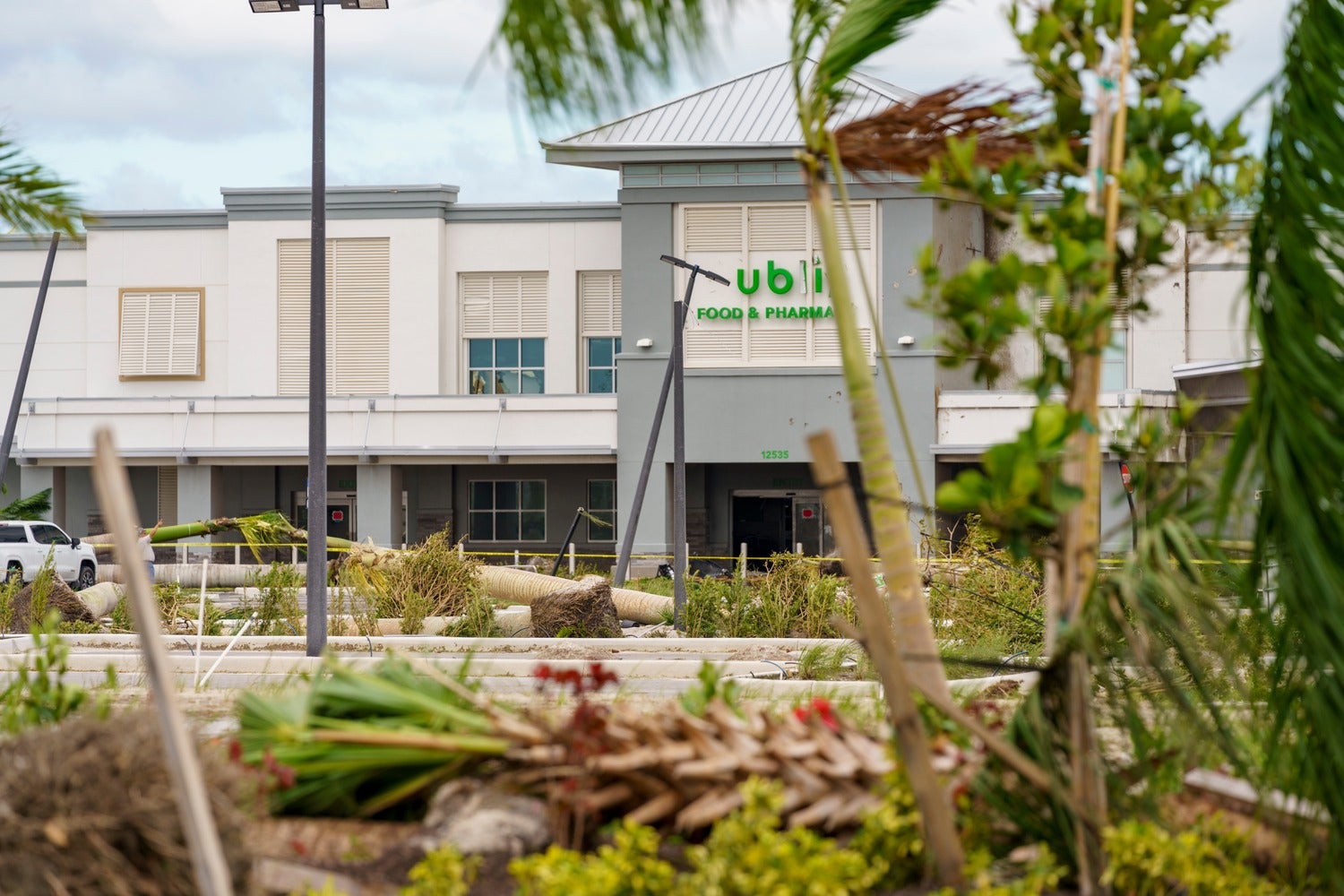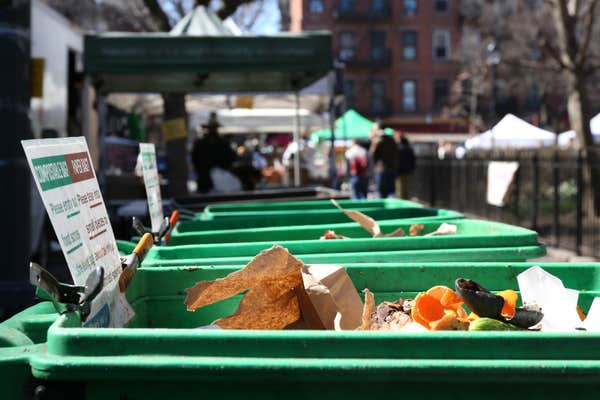Hey team, and welcome back to one5c! I generally don’t love the word “mandatory” when it comes to everyday climate action. Blanket statements and black-and-white thinking paint a world in which if we slip up once or twice or three times, we feel like we should just give up. I prefer to instead think about our world-saving to-dos as habits, repetitive motions that become almost automatic.
Naturally, though, there are exceptions. Proportionately, few American households compost their food and yard waste—one of the absolute best ways to cut the greenhouse emissions associated with chucked grub. In some cases, the problem is access; in others, it’s will. Can a mandate solve both in the U.S.’s most populous city? Tyler’s got the details today. —Corinne
WHAT WE’RE INTO THIS WEEK
By Olivia Gieger & Sara Kiley Watson

Action alert
Creating community from chaos
In the aftermath of disasters like hurricanes Milton and Helene, finding ways to take care of one another is at the top of the to-do list. That can come in many forms, but finding community can be key. The nonprofit Extreme Weather Survivors (EWS) provides a support network for those impacted by climate-fueled weather events. EWS connects survivors with one another, creating a community that empowers its members to share their stories and become advocates for change. “It is so critical to amplify the voices of people harmed by extreme weather,” Sierra Lindsey Kos, co-founder and co-executive director of EWS, tells one5c. “But we can’t create systemic change and sustained political power for policy change without building community and support first.” Survivors can share their stories directly with EWS here or join their private Facebook group here.
Consume this
A delicious climate champion in your backyard
On this Indigenous People’s Day, we direct your noses, taste buds, and baking skills toward the pawpaw. The custardy yellow fruit, which is native to 26 U.S. states and tastes wonderfully tropical despite its fall growing season, is rather resilient to climate change. That’s because pawpaws are incredibly genetically diverse, which means the wild plants are well adapted to a range of weather conditions. Indigenous people native to the Appalachian region including the Cherokee, Shawnee, and Lenape have countless ways of enjoying the fruit, including eating it fresh, dried, or mashed into cakes. This week our pals at Cool Beans took a deep dive into this “it” climate cultivar, including a recipe for jammy coconut crumble bars that simply must make their way to your stomach this fall.
Climate speak
Unicode says it’s Stick Season
The way we communicate about climate change matters. The newest addition to our lexicon isn’t a word, but an emoji. A dead, leafless tree will join the fleet of universal pictograms in 2025. The symbol is meant to bring attention to the toll human-caused warming is taking on our natural systems, according to the proposal for adding the symbol. Losing leaves is a common stress response for trees, which have been under increasing pressure as drought becomes more common and pests become an ever-present dilemma for forests across the globe. It’s the first emoji designed specifically to represent our rapidly shifting climate, though it joins a troupe of other applicable images like a stormy sea, a tornado, and a dodo.
Good read
When oil interests run the news
In Knox County, Ohio, approvals for a proposed solar farm that would provide enough energy for up to 120,000 homes are up in the air. But it’s not red tape or a backup at the permitting office stymieing the build-out. This installation is the focus of a heated misinformation campaign fueled by oil and gas interests, reports ProPublica and Floodlight News. Ex-execs from the methane-gas compressor company Ariel Corp. exploited the struggling local paper, which is owned by a media company known to take part in pay-to-play coverage, to run anti-solar stories and ads. In the past year, the paper published 52 stories on solar energy online, and 17 out of 40 print editions featured solar-critical front-page items. The story is only the latest in a growing list of instances where power companies or oil interests have commandeered local news outlets to propagate disinformation.
MIC-DROP CLIMATE STAT
$370
How much money the average household can save annually by installing a heat pump. Here’s what you need to know about making the switch.
CAUSE FOR OPTIMISM
Curbside composting’s biggest test yet
By Tyler Santora

The average American sends 1,600 pounds of trash to the landfill each year, about a third of which could have met a much better fate. Composting is among the top solutions for curbing the wasteful trend—and the release of the potent greenhouse gas methane from landfills. So, cities across the U.S. have started rolling out programs that make it easy (sometimes even mandatory) to collect those scraps. Now the trend is getting one of its biggest tests yet: New York City just expanded its curbside compost pilot program to all five boroughs. By April 2025, New Yorkers will be fined if they trash food and yard waste rather than separating it out for compost.
Here are the three big things you need to know about the program.
It’s the largest of its kind
The city now provides compost collection to just about all its residents alongside its established trash and recycling services. That’s 8.5 million people or around 3 million households. Considering only about 15 million households had access to curbside compost in the entire U.S. at the end of the year, that’s a giant jump. Do a little math, and if every single person in New York composted the average amount of food waste tossed out each year (at 325 pounds per person), the program could theoretically divert around 2.7 billion pounds of methane-leaking food waste from already chock-full landfills.
Curbside compost is simple, mostly
Just like you place trash and recycling bins on the street for pickup, the same happens with curbside composting. Cities then transport even the trickiest waste (think stuff like prepared foods, cheese, meat, and even pizza boxes) to composting facilities. In New York, about 60% of the resulting compost is sold to landscapers and 40% is given away to gardeners.
But scaling up projects can be tricky. Take, for instance, Madison, Wisconsin, whose program folded in 2021 because it was too labor-intensive and food and yard waste was often contaminated with non-compostable materials. Programs can also be expensive and require public education to convince residents to sort food waste from other trash. Still, other major locales are also moving in this direction. California is paving the way with a law that requires curbside compost and Washington state is following in its footsteps.
‘Compost’ can be a misnomer
NYC has branded its new program as curbside composting, but that’s not completely true. A majority of the food and yard waste gathered doesn’t become compost form but rather is diverted to energy production. The bio-waste is turned into a slurry that produces methane, which is then used like natural gas. Although this is better for the environment than having that gas burp out at the dump, burning it for energy still emits CO2. And some environmentalists worry that this cheap method of energy production will prevent cities from investing in renewables.
Even so, they see the habits the program stands to instill in residents as an important milestone. “Step No. 1 is getting New Yorkers to separate their organics,” Eric Goldstein, a senior attorney with the Natural Resources Defense Council, told Inside Climate News. “Step No. 2 is ensuring that the separated food scraps and yard waste go to their highest and best and most sustainable use—which is composting.”
